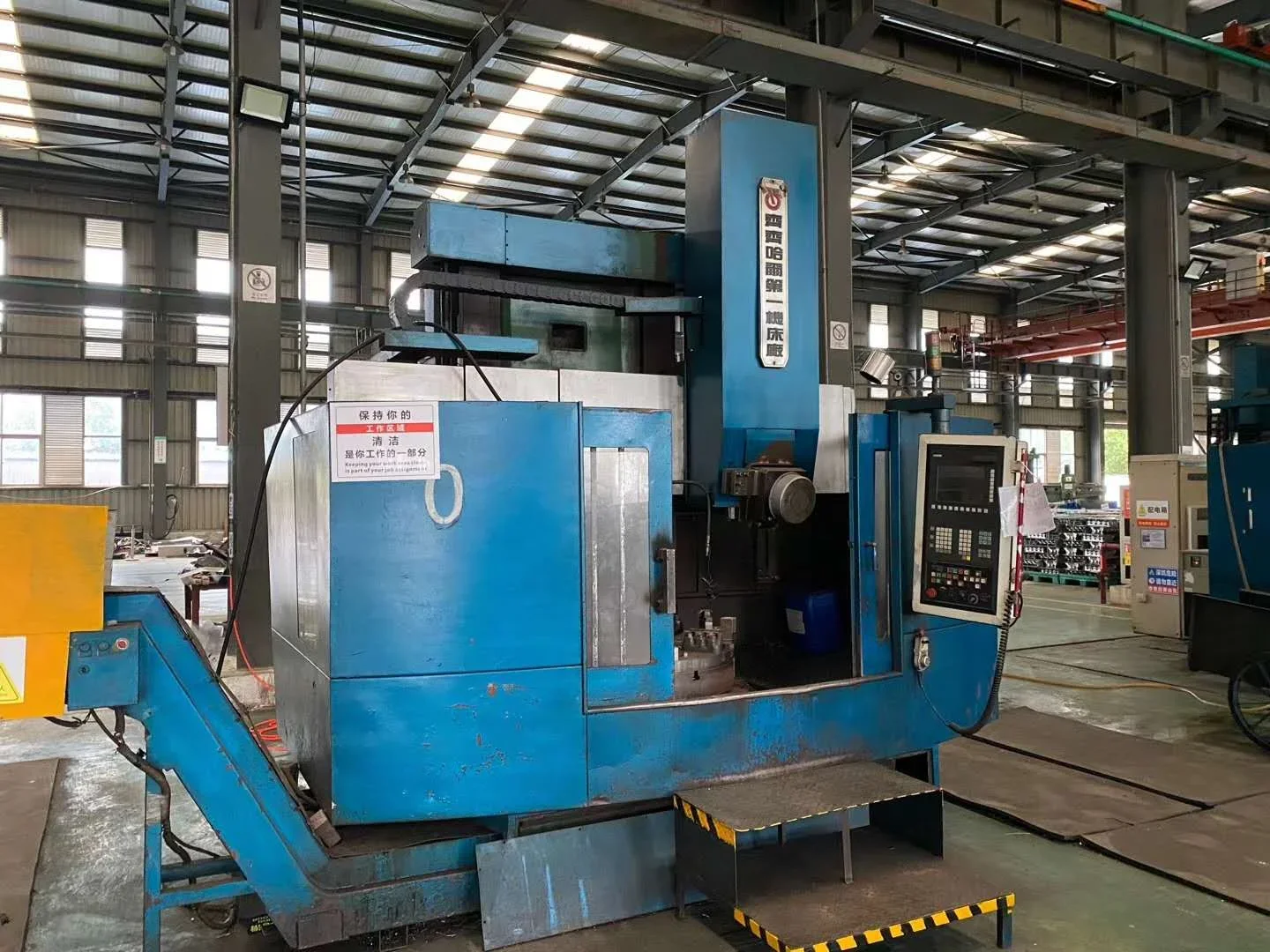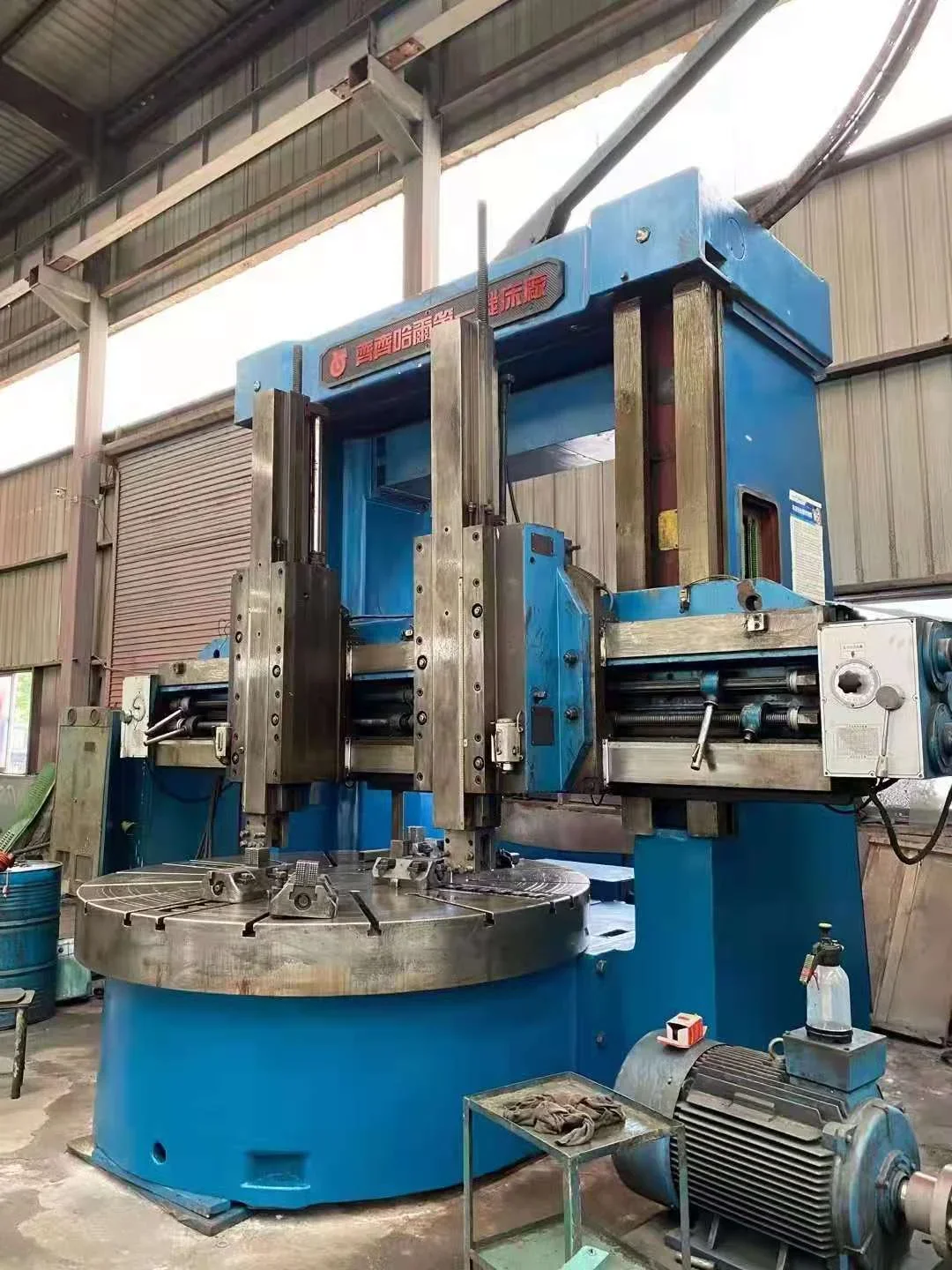Vertical lathes are essential machines used in various industries for shaping and machining large workpieces. They offer unique advantages and capabilities, making them a popular choice for many manufacturing processes. In this article, we will delve into the main features and functions of second-hand vertical lathes, providing a comprehensive understanding of their capabilities and applications.
Understanding Vertical Lathes
Vertical lathes, also known as vertical turning centers or vertical boring mills, are machines designed to rotate a workpiece on a vertical axis while cutting tools shape and machine the workpiece. Unlike horizontal lathes, vertical lathes have a vertical spindle orientation, allowing for efficient machining of large and heavy workpieces. These machines are widely used in industries such as aerospace, automotive, energy, and general manufacturing.

The Primary Purpose of Vertical Lathes
The primary purpose of vertical lathes is to perform turning operations on large workpieces. Turning is a machining process that involves removing material from a rotating workpiece to create a desired shape or surface finish. Vertical lathes excel at handling workpieces with large diameters and heights, making them ideal for applications such as turning large cylindrical components, creating deep grooves, and producing complex contours.
Types of Vertical Lathes
There are several types of vertical lathes available in the market, each with its own unique features and capabilities. Some common types include single-column vertical lathes, double-column vertical lathes, and turret vertical lathes. Single-column vertical lathes are compact and suitable for smaller workpieces, while double-column vertical lathes offer increased stability and rigidity for larger and heavier workpieces. Turret vertical lathes, on the other hand, provide enhanced versatility with multiple tool stations for simultaneous machining operations.

Main Features of Second-Hand Vertical Lathes
Second-hand vertical lathes offer a cost-effective solution for businesses looking to acquire these machines without investing in brand new equipment. While the specific features may vary depending on the model and manufacturer, there are some common features to look for when considering second-hand vertical lathes:
Spindle and Chuck: The spindle is a crucial component of a vertical lathe, responsible for rotating the workpiece. It is essential to ensure that the spindle is in good condition and capable of providing the required speed and torque. The chuck, which holds the workpiece in place, should also be inspected for proper functioning and gripping force.
Tooling System: The tooling system of a vertical lathe determines its versatility and ability to perform various machining operations. Look for a second-hand machine with a reliable and robust tooling system that allows for quick tool changes and accommodates a wide range of cutting tools.
Control System: The control system of a vertical lathe plays a vital role in its overall performance and ease of operation. Ensure that the second-hand machine is equipped with a modern and user-friendly control system that provides intuitive programming capabilities and advanced features such as tool path simulation and error detection.
Workpiece Capacity: Consider the maximum workpiece diameter and height that the vertical lathe can accommodate. This is crucial to ensure that the machine can handle the specific workpieces required for your applications.
Condition and Maintenance History: When purchasing a second-hand vertical lathe, it is essential to assess its overall condition and inquire about its maintenance history. Look for machines that have been well-maintained and have a documented service record to ensure reliability and longevity.
Functions and Applications of Second-Hand Vertical Lathes
Second-hand vertical lathes can perform a wide range of functions and find applications in various industries. Some common functions include:
Turning: Vertical lathes excel at turning operations, allowing for the creation of cylindrical shapes, tapers, and contours on large workpieces. This function is particularly useful in industries such as aerospace and automotive, where precision and accuracy are crucial.
Boring: Vertical lathes can also perform boring operations, which involve enlarging existing holes or creating new ones with high precision. This function is essential in industries such as energy and oil and gas, where large components require precise and accurate bores.
Grooving: Vertical lathes can create deep grooves on workpieces, allowing for the incorporation of features such as O-rings, seals, and threads. This function is commonly used in industries such as hydraulic systems, where sealing components are critical.
Contouring: With the ability to move the cutting tool along multiple axes, vertical lathes can perform complex contouring operations. This function is valuable in industries such as aerospace and defense, where intricate shapes and profiles are required.
The applications of second-hand vertical lathes are vast and diverse. Some common applications include:
Manufacturing of Large Components: Vertical lathes are widely used in the manufacturing of large components such as turbine rotors, gearboxes, and hydraulic cylinders. The ability to handle heavy workpieces and perform precise machining makes them indispensable in these industries.
Repair and Refurbishment: Second-hand vertical lathes are often used for repair and refurbishment purposes. They can restore worn-out components to their original specifications, extending their service life and reducing the need for new replacements.
Customization and Prototyping: Vertical lathes are also utilized for customization and prototyping purposes. They allow manufacturers to create unique and specialized components according to specific customer requirements or for testing and validation purposes.

Conclusion
Second-hand vertical lathes offer a cost-effective solution for businesses looking to acquire these versatile machines. Understanding their main features and functions is crucial in making an informed decision when purchasing second-hand equipment. With their ability to handle large workpieces and perform a wide range of machining operations, vertical lathes continue to play a vital role in various industries, contributing to efficient and precise manufacturing processes.
Optimizing Production: The Role of Used Vertical Lathe Machines in Streamlining Operations
